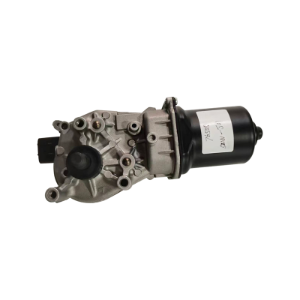BT001 Honda Accord Windshield Wiper Motor
Power Voltage 12V DC, 35W No-load Current Low speed ≦1.5A, high speed ≦2.0A No-loa...
View MoreThe wiper motor plays a critical role in automotive and machinery systems, powering the windshield wipers that ensure visibility during adverse weather conditions. A question that often arises in both OEM and aftermarket applications is whether the torque output of a wiper motor can be adjusted to suit different operational demands. The answer lies in understanding the design, purpose, and technological flexibility of these small but vital motors.

In general, most standard wiper motors are designed with a fixed torque output, optimized for the specific vehicle model or system in which they are installed. Manufacturers engineer them to provide sufficient power to move wiper blades under various conditions, such as rain, snow, or debris on the windshield, without the need for manual torque adjustment. The torque output is pre-calibrated based on blade size, arm length, windshield curvature, and the mechanical load expected in real-world use.
However, in specialized applications—such as heavy-duty vehicles, industrial machines, or customized automotive systems—there may be a need for variable torque. In such cases, torque adjustment is not typically performed on the motor directly but is achieved through other methods. One common approach is to use a motor controller or a pulse-width modulation (PWM) system to regulate motor speed and power delivery. By controlling the electrical input, it's possible to indirectly influence torque, especially during start-up or under load variation.
Some advanced wiper motor systems also include multiple speed settings or adaptive load sensing features. These systems do not manually adjust torque in a traditional sense but instead alter performance in real-time based on input from rain sensors or resistive feedback mechanisms. This intelligent design helps the wiper motor operate more efficiently and apply additional torque only when necessary, such as during heavy rainfall or when ice causes increased friction.
Another method of modifying torque output involves mechanical changes to the gear ratio within the motor assembly. A higher gear ratio can increase torque but reduce speed, while a lower ratio does the opposite. This kind of adjustment, however, typically requires significant design changes and is not a practical option for end users.
In aftermarket or racing scenarios, some users attempt to retrofit or upgrade wiper motors to increase torque capacity. While this is technically possible, it often involves replacing the entire motor with a higher-torque model rather than adjusting the original. Care must be taken to ensure compatibility with existing mounting points, electrical systems, and wiper mechanisms.
It is also important to consider safety and durability when attempting any modifications. Excessive torque can strain wiper linkages, overheat the motor, or even damage the windshield. Manufacturers balance torque output to meet both performance and longevity standards, and exceeding these parameters can cause premature failure or unsafe operation.
In summary, while traditional wiper motors are not designed for manual torque adjustment, there are ways to influence torque output through electronic control, sensor-based systems, or mechanical redesign. For most users, the built-in torque of a well-matched motor is sufficient and provides the combination of reliability and performance. Those requiring higher or variable torque should consult with manufacturers or specialists to explore appropriate solutions that ensure safe and efficient operation.